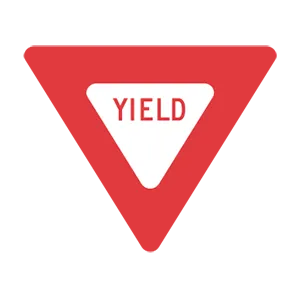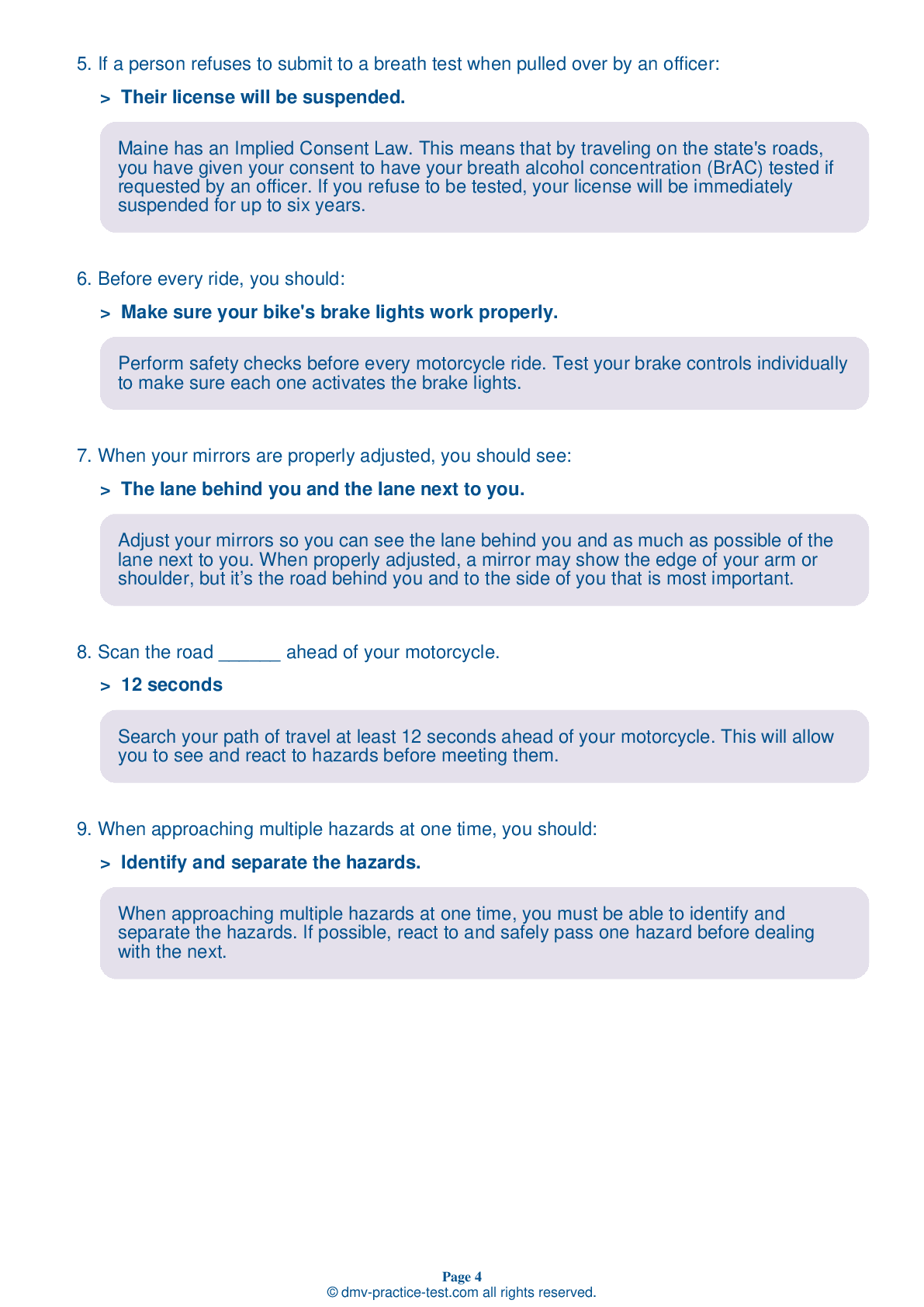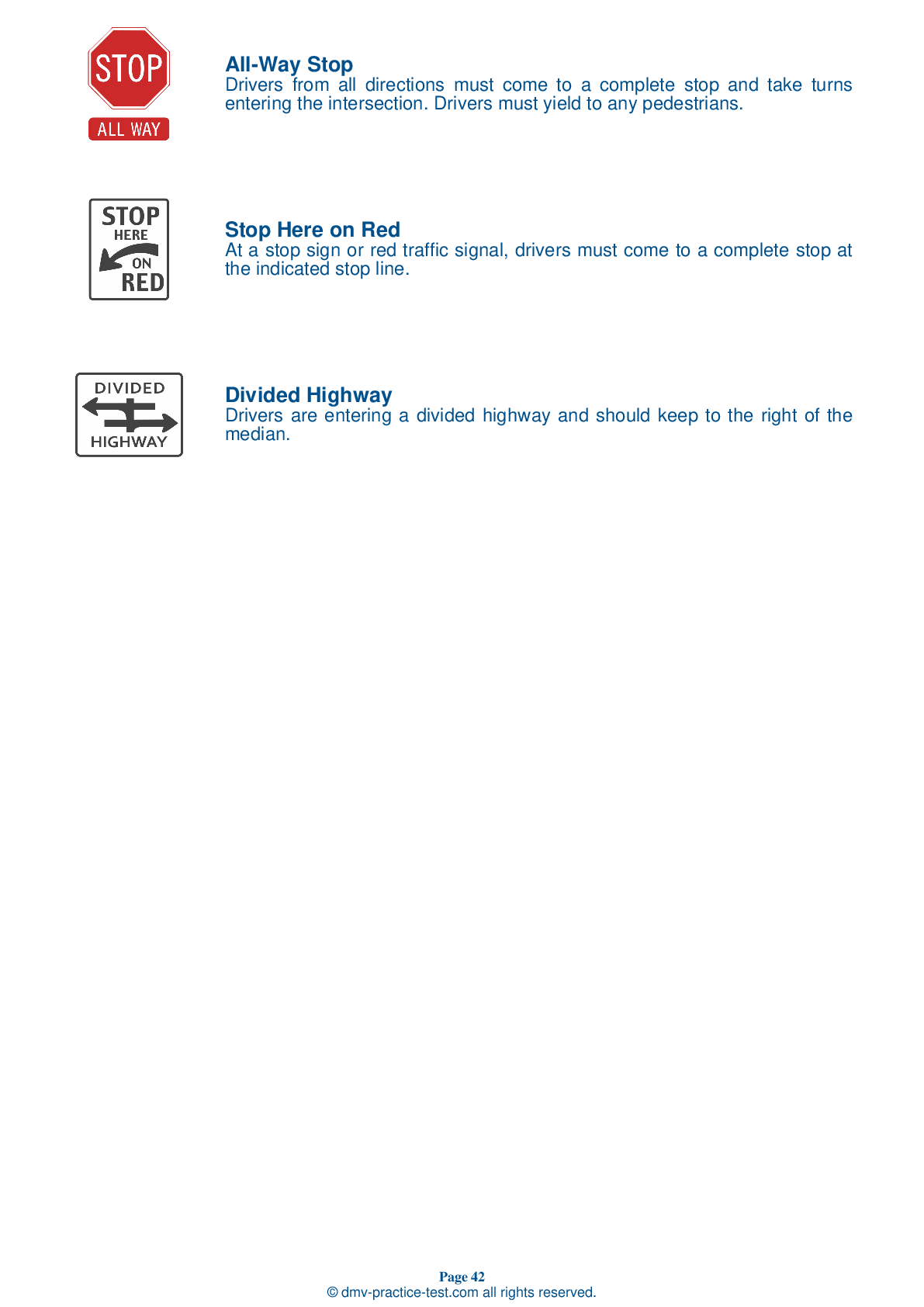Motorcycle Test | License ME 2025 | FREE Online Practice! #10
Take this FREE motorcycle test (license in ME 2025) to check your knowledge of the road rules. To improve your results, download a motorcycle handbook online, study theory, and practice for free on our website. Still worried about how to get a motorcycle license in Maine in 2025? Check our website for more sample tests, train as much as possible, and boost your grades!
1 . At an intersection with a yield sign, you should:

A yield sign means that you must slow down and yield the right-of-way to traffic in the intersection or roadway you are entering.
2 . When approaching a blind intersection, riders should:
When approaching a blind intersection that is controlled by a stop line or stop sign, you must first stop where indicated. You may then edge forward and stop again just short of where the cross traffic lane meets your lane. From that position, lean your body forward and look around buildings, parked cars, or bushes to see if anything is approaching. Make sure your front wheel stays out of the crossroad while you are looking.
3 . Before riding, a motorcycle operator should check the clutch. A properly working clutch should feel:
Check your clutch and throttle before riding your motorcycle. The throttle should snap back when you let go and the clutch should feel tight and smooth.
4 . When deciding on a lane position, you should:
In general, there is no single best lane position. No portion of the lane need be avoided at all times. Position yourself in the portion of the lane where you are most likely to be seen and you can maintain a cushion of space around you.
5 . A street-legal motorcycle must have all of the following, except:
At minimum, a street-legal motorcycle must have at least a headlight, taillight, and brake light; front and rear brakes; turn signals; a horn; and two mirrors.
6 . Reflective clothing should:
Most motorcycle crashes occur in broad daylight. Increasing your visibility by wearing bright colors and reflective materials is a good idea at all times.
7 . When a lead rider's left arm is bent at the elbow with their index and middle fingers pointing straight up, it means:
Hand signals are an important part of communication when riding in groups. When the lead rider's left arm is bent at the elbow with their index and middle fingers pointing straight up, it means the group should move into a double-file formation.
See the exact questions that will be on the 2025 Maine DMV exam.
99.2% of people who use the cheat sheet pass the FIRST TIME
Jeneen was tired of paying $5/gallon. She got herself a scooter that required the motorcycle license. She studyed the motorcycle test cheat sheet and passed her test the next day!
Christopher tells us how he knew nothing prior to obtaining the motorcycle study guide, and he only got one question wrong because he clicked on the wrong answer by mistake.



